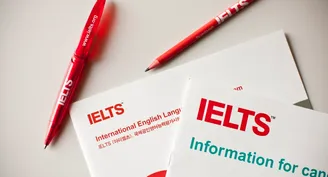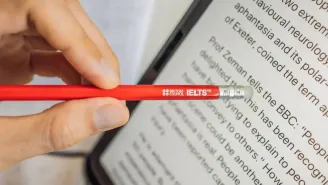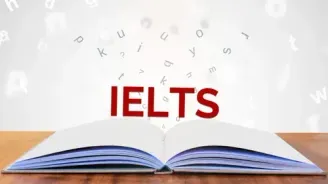What Is Meaning Reading Answers Passage
What Is Meaning Reading Answers Passage
Why do we respond to words and symbols in the ways we do?
Paragraph A. Semantics, in general, is the subdivision of linguistics concerned with meaning. Semantics attempts the systematic study of the assignment of meanings to minimal meaning-bearing elements and the combination of these in the production of more complex meaningful expressions. Elementary word groups may be combined in a relationship of content, forming thematic groups and semantic and lexical “fields”. For example, all the means of expressing the concept of joy in a given language constitute the lexical-semantic field “joy”. Because of the trained patterns of response, people listen more respectfully to the health advice of someone who has “MD” after his name than to that of someone who hasn’t. A “pattern of reactions”, then, is the sum of the ways we act in response to events, to words, and to symbols.
Paragraph B. Words and word meanings are one of the most important information cues used in speaking and understanding, as well as in reading. Indeed, a person’s life experience and culturBal experience (even reading comic strips) are most relevant to the development of linguistic “meaning making” in any language, which is very important in the communication process. Words from a person’s native language and culture perspective can carry special associations. For instance, the Spanish words for hammock, tobacco, and potato are derived from Tamo words for these items. Therefore, when people’s semantic habits are reasonably similar to those of most people around them, they are regarded as “normal” or perhaps “dull”. If their semantic habits are noticeably different from those of others, they are regarded as “individualistic” or “original”, or, if the differences are disapproved of or viewed with alarm, as “crazy”.
Paragraph C. A definition states the meaning of a word using other words. It is clear that to define a word, as a dictionary does, is simply to explain the word with more words. However,defining words with more words usually gets people (especially children) at once into what mathematicians call an “infinite regress”, an infinite series of occurrences or concepts. For example, it can lead people into the kind of run-around that people sometimes encounter when they look up “impertinence” and find it defined as “impudence”, so they look up “impudence” and find it defined as “impertinence”. Yet—and here we come to another common reaction pattern— people often act as if words can be explained fully with more words. To a person who asked for a definition of jazz, Louis Armstrong is said to have replied, “If you have to ask what jazz is, you’ll never know”, proving himself to be an intuitive semanticist as well as a great trumpet player.
Paragraph D. Semantics, then, seeks the “operational” definition instead of the dictionary Bridgman, the 1946 Nobel Prize winner and physicist, once wrote, “The true meaning of a term is to be found by observing what a man does with it, not by what he says about it.” He made an enormous contribution to science by showing that the meaning of a scientific term lies in the operations, the things done, that establish its validity, rather than in verbal definitions. An example of operational definition of the term “weight” of an object, operationalized to a degree, would be the following: “weight is the numbers that appear when that object is placed on a weighing scale”. According to it, when one starts reading the numbers on the scale, it would more fully make an operational definition. But if people say—and revolutionists have started uprisings with just this statement “Man is born free, but everywhere he is in chains!”—what operations could we perform to demonstrate its accuracy or inaccuracy?
Paragraph E. Next, if this suggestion of “operationalism” is pulled outside the physical sciences where Bridgman applied it, what “operations” are people expected to perform as the result of both the language they use and the language other people use in communicating to them? Here is a personnel manager studying an application form. He comes to the words “Education: Harvard University”, and drops the application form in the wastebasket (that’s the “operation”) because, as he would say if you asked him, “I don’t like Harvard men”. This is an instance of “meaning” at work—but it is not a meaning that can be found in dictionaries.
Paragraph F. Far as we know, human beings are the only creatures that have, over and above that biological equipment which we have in common with other creatures, the additional capacity for manufacturing symbols and systems of symbols. When we react to a flag, we are not reacting simply to a piece of cloth, but to the meaning with which it has been symbolically endowed. When we react to a word, we are not reacting to a set of sounds but to the meaning with which that set of sounds has been symbolically endowed. As a matter of fact, how sound symbolism is processed in our brains has not yet been fully explained in the field.
Paragraph G. Simply put, the key point of semantics lies in, not the words definition, but our own semantic reactions, which occur when we respond to things the way they “should” be, rather than to the way they are. If a person was to tell a shockingly obscene story in Arabic or Hindustani or Swahili before an audience that understood only English, no one would blush or be angry; the story would be neither shocking nor obscene— indeed, it would not even be a story. Likewise, the value of a dollar bill is not in the bill, but in our social agreement to accept it as a symbol of value. If that agreement were to break down through the collapse of our government, the dollar bill would become only a scrap of paper. We do not understand a dollar bill by staring at it long and hard. We understand it by observing how people act with respect to it. We understand it by understanding the social mechanisms and the loyalties that keep it meaningful. Therefore, semantics belongs to social studies and potentially underpins the integrity of the social sciences.
What Is Meaning Reading Answers with Sample Questions
Discover exciting and informative IELTS reading answers about What Is Meaning Reading Answers with Sample Questions.
Check Out 20+ IELTS Reading Practice Test Questions with Answers
Below are some top free IELTS reading Practice test online questions with detailed answers to enhance your IELTS preparation online. We have provided sample passages for each test type for your reference.
- The Discovery Of Baby Mammoth Reading Answers
- The Dead Sea Scrolls Reading Answers
- The Ring-Tailed Lemur Reading Answers
- Alexander Henderson Reading Answers
- Henry Moore Reading Answers
- Why We Need To Protect Polar Bears Reading Answers
- Nutmeg A Valuable Spice Reading Answers
- Cutty Sark Reading Answers
- The Vikings Wayfaring Ways Reading Answers
- Natural Pesticide In India Reading Answers
- Bakelite Reading Answers
- William Henry Perkin Reading Answers
- The Impact Of Wilderness Tourism Reading Answers
- Bondi Beach Reading Answers
- Transition Care For The Elderly Reading Answers
- Doctoring Sales Reading Answers
- The Secret Of Staying Young Reading Answers
- Roman Tunnels Reading Answers
- Flying Tortoises Reading Answers
- Bath International Music Festival Reading Answers
- A Remarkable Beetle Reading Answers
- Sheet Glass Manufacture The Float Process Reading Answers
- Space Travel And Health Reading Answers
- Pulling Strings To Build Pyramids Reading Answers
- Raising The Mary Rose Reading Answers







